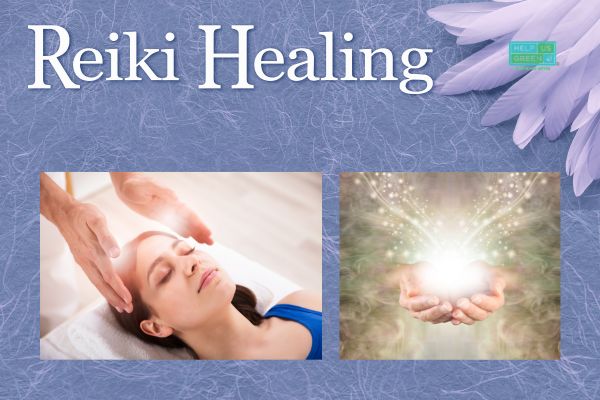The journey of healing might take various forms throughout your life. After all, there are many types of healing that can help you improve your well-being. One such healing is Reiki Healing. Originating from Japan, this type of healing focuses on the flow of energy throughout the body for relaxation and well-being by helping you maintain harmony between the body and mind. To improve the experience, more often than not, incense sticks are used in the process.
What is Reiki Healing?
In Reiki Healing, the practitioner uses their hands to deliver energy to your body. He moves his hands slowly on specific areas of your body to improve the flow of energy and remove negative energy. This technique works well for relaxation, reducing stress and anxiety.
This healing technique is believed to have originated in Japan and was developed by Mikao Usui in the early 20th century. It is based on the idea that unseen life force energies flow through our bodies.
When it comes to the principles and philosophies of Reiki practice, there are 5 of them, known as the Five Reiki Precepts:
- Just for today, I will not be angry.
- Just for today, I will not worry.
- Just for today, I will be grateful.
- Just for today, I will do my work honestly.
- Just for today, I will be kind to every living thing.
These principles serve as a reminder and help to maintain balance and harmony. They emphasize the importance of living in the present moment and practicing these principles daily. They cultivate a positive mindset, achieve emotional balance, and experience life to the fullest.
How Reiki Healing Works
To understand how reiki healing works, you first need to understand the concept of life force energy (Ki). It is a subtle energy that flows through our bodies and brings us to life. It is the basis of all life and the universe. Even though we can’t see or touch it, most yoga practitioners have felt its presence. It moves through us, affecting everything from big physical movements to tiny biochemical processes. It helps us control our breathing, digestion, blood flow, waste removal, and cell growth and healing. Furthermore, it has an influence over our thoughts, emotions, and consciousness, which directly impacts our overall health and well-being.
Ki is closely connected to chakras, which are energy centres that regulate different aspects of our physical and emotional health. In Reiki healing, the aim is to balance and unblock these chakras for a free flow of energy. Another way to achieve this is through chakra healing, which focuses on directly cleansing and balancing each chakra to ensure the natural flow of life force energy, essential for overall health. To know more about chakra healing, read this blog.
So, how can you actually do Reiki healing? The process of channelling and transferring reiki energy involves several steps:
Benefits of Reiki Healing
Reiki healing offers many benefits for your body, mind, and spirit.
-
Physical Benefits of Reiki Healing
- Pain relief: It can help ease pain, discomfort, and tension by promoting relaxation and improving energy flow, supporting your body’s natural healing processes.
- Immune system support: Regular Reiki sessions may strengthen your immune system, making you less likely to get sick.
- Better sleep: It helps you relax deeply, leading to better sleep and overall well-being.
- Faster healing: Reiki energy speeds up the healing of injuries, surgeries, and other physical conditions.
Emotional and Mental Benefits of Reiki Healing
- Stress reduction: It calms your mind, reduces stress, and helps manage anxiety, promoting emotional balance and mental clarity.
- Emotional release: During the session, you might release suppressed emotions, which contributes to overall wellness.
- Improved mood: Regular Reiki practice can lift your mood, increase feelings of joy, and reduce symptoms of depression.
- Mind-body connection: It helps you connect your mind, body, and spirit, promoting overall well-being.
Spiritual Benefits of Reiki Healing
- Spiritual growth: It encourages self-awareness, introspection, and personal growth, helping you connect with your inner wisdom and intuition.
- Energy alignment: It balances your energy centers (chakras), helping you align with your higher self and purpose.
- Inner peace: It creates a sense of inner peace, helping you handle life’s challenges with grace and resilience.
Incorporating Incense into Reiki Healing
The role of scent in enhancing the healing experience
In Reiki healing, incense sticks play an important role in improving the healing experience. They have been used for ages to cleanse spaces and uplift energy, helping to create a healing ambience. These sticks not only improve focus during meditation but also trigger emotional responses, fostering feelings of stability and spiritual connection through their scent.
Choosing the right incense for Reiki healing
Choosing the right incense is important as it sets the tone and atmosphere for the Reiki session. Here are some options for you to choose from:
-
Methods of using incense during Reiki sessions
You can use incense sticks in 3 different ways during reiki sessions:
- Before the session: Light an incense stick in the treatment room before starting the session to set the mood and prepare the space. You can use incense stick fragrances like sage or palo santo to clear any stagnant energy.
- During the session: Place a lit incense stick near the treatment area. The gentle smoke fills the space with healing energy. You can connect with the scent by breathing it in during Reiki hand positions or energy channelling. Also, trust your intuition and move the incense stick around the body.
- After the session: Burn another incense stick to seal the healing energy and express gratitude for the healing process.
How to use Reiki incense?
- Find a suitable place to burn your incense.
- Light the end of the incense stick.
- Let the flame burn for about 10 seconds.
- Gently blow out the flame.
- Stick your incense into the holder.
- Let the incense burn until it extinguishes.
- Practice proper fire safety.
Section 5: Creating a Reiki Healing Space
Creating a reiki healing space for an effective session is crucial as it is a sacred sanctuary. Here’s how you can do it:
Reiki Healing Techniques
Hand positions and techniques for self-healing. Here are the 7 chakras:
Techniques for giving Reiki to others:
Incorporating visualisation and meditation into Reiki practice
You can also use dhoop sticks to improve your visualisation and meditation efforts for reiki practice. Want to know which ones would fit your needs? Read our blog on top dhoop sticks for meditation and relaxation.
Reiki Healing and Self-Care
Reiki practitioners need self-care like a human body needs water because it ensures they maintain their own well-being while helping others. By prioritising self-care, practitioners can sustain their energy levels, enhance their ability to channel healing energy and prevent burnout.
For their overall well-being, they can incorporate mindfulness practices like meditation, yoga, breath awareness, etc. Mindfulness reduces stress, improves sleep, boosts emotional well-being, and brings inner peace.
Beyond this, HelpUsGreen’s incense sticks can also help to relax and reduce stress. Choose calming scents like lavender, sandalwood, or frankincense, and create a ritual by lighting incense in a quiet space.
Finally, Reiki Healing offers a holistic approach to improving your well-being by balancing the body’s energy and promoting relaxation. Originating in Japan, this practice is all about channelling energy through a practitioner’s hands to improve physical, emotional, and spiritual health. Incorporating HelpUsGreen’s incense sticks can complement the healing process by creating a calming and positive environment.
FREQUENTLY ASKED QUESTIONS:
-
Which incense is best for healing?
The best incense stick for healing will depend on your goal. However, HelpUsGreen’s lavender and sandalwood incense sticks are popular choices. -
How do you practice Reiki every day?
You can do reiki healing yourself by setting aside time daily to meditate and place your hands on different parts of your body, focusing on channelling energy. -
What are the 4 symbols of Reiki?
The 4 symbols are Cho Ku Rei (Power Symbol), Sei He Ki (Emotional Healing Symbol), Hon Sha Ze Sho Nen (Distance Healing Symbol), and Dai Ko Myo (Master Symbol). -
What are the 4 levels of Reiki?
The 4 levels are Reiki I (First Degree), Reiki II (Second Degree), Reiki III (Third Degree or Advanced), and Reiki Master. -
Does incense bring positive energy?
Yes, incense can help create a positive and relaxing environment. -
Which incense is best for spiritual cleansing?
Sage and frankincense are commonly used for spiritual cleansing.




